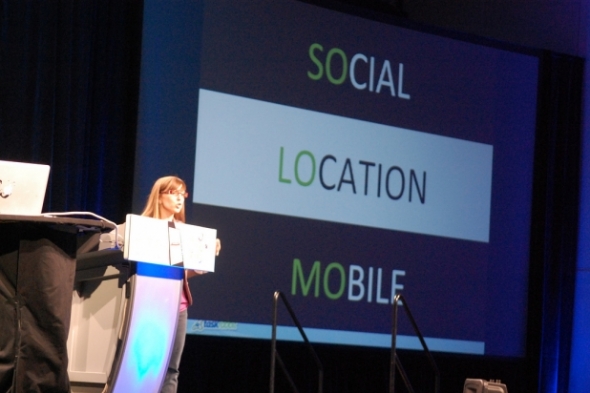Location plays a critical role in the insurance industry. The issue of place is central to business acquisition, channel management, underwriting, and claim adjudication, to name a few insurance business functions. However, most insurers are challenged by how to find, access, and use the requisite geographic information to improve decision-making, operations, and customer service. Fortunately, one potential solution to the challenge is emerging through the use of three groups of technologies – social media, location intelligence, and mobility – which some technology and telecommunication firms are beginning to support and/or package together into one set of interdependent capabilities called SoLoMo. Ovum's recently published report SoLoMo: Social, Location, and Mobility Join to Enhance Insurance Commerce and Service describes what SoLoMo is and discusses SoLoMo's stages of engagement, major capabilities, and revenue opportunities for insurers. One revenue possibility is offering telematics value-add services such as discounts at restaurants to reward good driving behavior.
SoLoMo is a set of capabilities that “knows” about the longitude and latitude of a geographic area and, to some degree, knows in real time about the tangible assets (e.g. buildings, vehicles, livestock) within it, whether those tangible assets have embedded sensors or not. SoLoMo creates and delivers its knowledge in a real-time, geographically defined context. The contextually determined knowledge is created by streams of information captured on a device as a person travels to or moves through a location. That information includes the needs of the person using the device, the device's location, and the location's tangible assets. The information also includes social media and business enterprise social network feeds about the location and its tangible assets. Currently, a SoLoMo device could be a smartphone, tablet, or vehicle with an embedded sensor.
There are four stages of real-time engagement between a SoLoMo device and its surroundings. SoLoMo devices can already support some of the capabilities of the first three stages of engagement:
- Stage 1 – Passive engagement: This is the basic level of SoLoMo engagement, and it offers a "for your information" purpose about the location of homes or businesses.
- Stage 2 – Active engagement: This level of engagement includes the commonly available turn-by-turn directional guidance with or without voice navigation. However, it could also include receiving information from other smartphones or tablets in the geographic area.
- Stage 3 – Interactive engagement: This level of engagement enables insurance stakeholders to receive and incorporate information from sensor-embedded tangible assets in the geographic area concerning their state (e.g. damaged or destroyed).
- Stage 4 – Autonomous engagement: This level of engagement enables the SoLoMo device to accomplish everything in Stage 3 but without human intervention.
SoLoMo will need to encompass six major capabilities to support insurance company commerce and service requirements as the levels of engagement evolve through the four stages. The objective of each capability is:
- Determine: This capability enables users of a SoLoMo device to determine if a physical artifact exists in a given location, whether the person using a SoLoMo device is stationary or moving through the geographic area.
- Share: This capability enables users of a SoLoMo device to share ideas with personal social media or enterprise social network (ESN) members about the state of the physical artifact and its content.
- Capture: This capability enables users of a SoLoMo device to capture information about the location and its tangible assets (and possibly the contents of each tangible asset).
- Interact: This capability enables users of a SoLoMo device to interact with a digital avatar representing the tangible asset and its content. The digital avatar would store the date and nature of the interaction as well as the name or other identification of the SoLoMo device (or person using the device) engaging with it.
- Integrate: This capability enables users of a SoLoMo device to integrate third-party data sources (e.g. NOAA, Marshall & Swift/Boeckh) and information from the insurer's ESN, core administration, and customer relationship management or customer experience management (CRM/CEM) systems together on the device.
- Personalize: This capability enables the user of a SoLoMo device to receive personalized information based on the insurance stakeholder's needs and the geographic area.
SoLoMo offers insurers an opportunity to provide fee-based value-added services. This is important because it helps insurers diversify their earnings from being primarily risk-based premium revenue. Examples of value-added services that insurers could offer policyholders or prospective clients include the following, which could be augmented with social media feeds or, where appropriate, the insurer's ESN content and real-time commentary:
- Telematics services – Insurers could offer: (1) discounts at restaurants based on good driving behavior; (2) safe driving programs that provide discounts on automobile insurance premiums to policyholders willing to install a device, or an app on an existing device, that prevents the driver from using a smartphone while the vehicle is in motion; or (3) information about the closest authorized automobile repair shop.
- Remediation services – Insurers could provide a buying service for requisite items to restore retail customers’ homes or commercial clients’ business facilities, including bundling reviews from other policyholders or the general marketplace about the quality of products and services from companies selling the replacement products.
- Child or elderly parent safety monitoring – Insurers could offer clients monthly geo-fencing monitoring of children or elderly parents' movements within a target location.
- Business interruption cost estimation – Assuming the enterprise has a sufficient number of embedded sensors in the facility's structures and content the enterprise sells, insurers could estimate the state of each of the enterprise's tangible assets (existence, destruction, damage), compare that with data sources relating to labor and material cost to replace or remediate the tangible assets, and wirelessly report that information to the enterprise's CFO and chief risk officer (and to the insurer's actuarial and claim departments).





